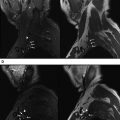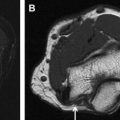Magnetic resonance neurography (MRN) is a specialized technique that is rapidly becoming part of the diagnostic algorithm of peripheral nerve pathology. However, in order for this modality to be considered appropriate, its value compared with current methods of diagnosis should be established. Therefore, radiologists involved in MRN research should use appropriate methodology to evaluate MRN’s effectiveness with a multidisciplinary approach. This article reviews the various tiers of research available to assess the clinical value of a diagnostic modality with an emphasis on how to evaluate the impact of MRN on diagnostic thinking and therapeutic decisions.
Key points
- •
Radiologists involved in magnetic resonance neurography (MRN) research should use appropriate methodology to evaluate the effectiveness of this imaging technique.
- •
Clinical research involving MRN has focused on establishing technical and diagnostic accuracy efficacy. Future research is needed to evaluate MRN with respect to the higher levels in the efficacy hierarchy: therapeutic, patient outcome, and societal.
- •
Data collection from the treating physician is necessary to address the higher levels in the efficacy hierarchy.
Introduction
The rapid advent of new diagnostic techniques in radiology has led to the notion that these new technologies should be evaluated not only for optimal image quality and diagnostic accuracy but also for cost-effectiveness and ultimate improvement in patient care. In addition, in order for a modality to be considered appropriate, its value compared with current methods of diagnosis should be established. Taking these factors into consideration, the evaluation of a diagnostic technology can be complicated and, for a new technology to become a viable option for incorporation in a diagnostic algorithm, it should excel in multiple categories of diagnostic technology assessment.
Extensive work has been done in the methodology of technology assessment. Fineberg and colleagues, in 1977, described 4 levels of efficacy to evaluate the clinical effectiveness of a diagnostic procedure. Fryback and Thornbury, and later Thornbury, revised it to a 6-tiered model for efficacy. These models incorporate evaluation of both efficacy and effectiveness. The term efficacy defines the probability of benefit from the technology under ideal conditions of use, whereas the term effectiveness is used to reflect the performance in everyday clinical practice. Hunink and Krestin have argued that evaluation of a new diagnostic test on the 6-tier model might be challenging because of time and economic constraints.
Magnetic resonance neurography (MRN) is a specialized technique that is rapidly becoming part of the diagnostic algorithm in the clinical evaluation of peripheral nerve injury. However, in order for this modality to be considered appropriate, its value compared with current methods of diagnosis should be established. Therefore, radiologists involved in MRN research should use appropriate methodology to evaluate MRN’s effectiveness, ideally with a multidisciplinary approach. This article reviews the classic hierarchical model used in assessing diagnostic technologies along with a discussion of how this model can be applied to MRN. The article also emphasizes how to evaluate the impact of MRN on diagnostic thinking and therapeutic decisions.
Introduction
The rapid advent of new diagnostic techniques in radiology has led to the notion that these new technologies should be evaluated not only for optimal image quality and diagnostic accuracy but also for cost-effectiveness and ultimate improvement in patient care. In addition, in order for a modality to be considered appropriate, its value compared with current methods of diagnosis should be established. Taking these factors into consideration, the evaluation of a diagnostic technology can be complicated and, for a new technology to become a viable option for incorporation in a diagnostic algorithm, it should excel in multiple categories of diagnostic technology assessment.
Extensive work has been done in the methodology of technology assessment. Fineberg and colleagues, in 1977, described 4 levels of efficacy to evaluate the clinical effectiveness of a diagnostic procedure. Fryback and Thornbury, and later Thornbury, revised it to a 6-tiered model for efficacy. These models incorporate evaluation of both efficacy and effectiveness. The term efficacy defines the probability of benefit from the technology under ideal conditions of use, whereas the term effectiveness is used to reflect the performance in everyday clinical practice. Hunink and Krestin have argued that evaluation of a new diagnostic test on the 6-tier model might be challenging because of time and economic constraints.
Magnetic resonance neurography (MRN) is a specialized technique that is rapidly becoming part of the diagnostic algorithm in the clinical evaluation of peripheral nerve injury. However, in order for this modality to be considered appropriate, its value compared with current methods of diagnosis should be established. Therefore, radiologists involved in MRN research should use appropriate methodology to evaluate MRN’s effectiveness, ideally with a multidisciplinary approach. This article reviews the classic hierarchical model used in assessing diagnostic technologies along with a discussion of how this model can be applied to MRN. The article also emphasizes how to evaluate the impact of MRN on diagnostic thinking and therapeutic decisions.
Six tiers of diagnostic efficacy
The classic diagnostic efficacy model approximates the sequence of image generation and its use, so a brief review of the work flow is useful. An image is recorded by the imaging device and stored. This image is then interpreted by the radiologist who generates a report based on various normal and abnormal findings. The clinician uses this information to arrive at the final clinical diagnosis and drives the therapeutic decision-making process. The clinician’s treatment decisions affect the patient’s health outcome(s) and ultimately contribute to the economic and overall health outcomes at the societal level.
The 6-tiered model of efficacy starts at the level of imaging quality with level 1, defined as technical efficacy; level 2, defined as diagnostic accuracy efficacy, relates to image interpretation; levels 3 and level 4, defined as diagnostic thinking efficacy and therapeutic efficacy, respectively, take into account the clinician’s decision making; level 5 is defined as patient outcome efficacy and describes the effect from a patient’s perspective; and level 6, societal efficacy, encompasses the effect on the health care system and society as a whole. In this hierarchical model, the relevance of higher levels depends on the proven efficacy at the lower levels. Also, an improvement at the lower levels of efficacy should be justified by a tangible effect on the higher levels. For example, there is no relevance of diagnostic accuracy efficacy until the technical efficacy is proved; in contrast, there may be more scope to improve the technical efficacy but it might not necessarily improve the diagnostic accuracy efficacy. The 6 levels of assessment are discussed in the following sections along with how they apply to the evaluation of MRN.
Level 1: Technical Efficacy
Technical efficacy is under the physicist’s purview. It evaluates the technical characteristics of an image like signal, noise, quality, and spatial and contrast resolution. The technical efficacy is tested on phantoms and then on patients. MRN is currently performed at few centers in the country, and every center should optimize the imaging quality to obtain high-resolution and high-contrast two-dimensional and three-dimensional imaging before they use the technique on their patients. The technical efficacy for images obtained by MRN has been successfully studied in some centers, and it continues to improve.
Level 2: Diagnostic Accuracy Efficacy
This refers to image interpretation by the radiologist to make a diagnosis. Several descriptive statistics are used for this evaluation, such as sensitivity, specificity, positive and negative predictive values, and receiver operating characteristics (ROC) analysis. The diagnostic accuracy efficacy is a combined function of the image quality and observer interpretation. The observer interpretation is reader dependent. In MRN, the learning curve is steep and readers must learn normal nerve anatomy, anatomic variations, imaging pitfalls, nerve pathophysiology, and the wide spectrum of lesions encountered in a busy neuromuscular practice. To alleviate potential interpretation errors and to attain reasonable diagnostic performance, MRN readers must improve their interpretation skills by reading current articles and regularly participating in multidisciplinary conferences. In the literature, MRN has been shown to correlate with clinical, electrophysiological, and surgical findings, and good to excellent diagnostic accuracy and interobserver reproducibility has been observed in the evaluation of various small and large peripheral nerves. Chhabra and colleagues reported the optimal cutoff value of nerve/vessel signal intensity ratio for predicting sciatic neuropathy was 0.89, with sensitivity of 94.1% and specificity of 90.2% (area under the ROC curve, 0.963; 95% confidence interval, 0.886–0.994). Although anatomic MRN is practiced with good accuracy, functional diffusion tensor imaging (DTI) is also gaining acceptance. Andreisek and colleagues reported that there were no side-to-side statistically significant differences on fiber tracking of median nerves in healthy volunteers, reflecting the good precision of DTI. Guggenberger and colleagues showed the fractional anisotropy and apparent diffusion coefficient threshold values of normal and pathologic median nerves.
Level 3: Diagnostic Thinking Efficacy
Diagnostic thinking efficacy measures the ability of a new technology to provide clinically useful information and alter the diagnostic algorithm. A diagnostic test might have high sensitivity and specificity, but it should be able to make a difference in establishing the diagnosis or affecting the diagnostic work-up. Diagnostic thinking efficacy can be evaluated by using questionnaires that are completed by clinicians before and after receiving the image interpretation results. The questionnaire may pertain to certainty of diagnosis or the physician’s confidence in certain clinical findings, before and after imaging results. One such questionnaire used in our practice ( Fig. 1 ) uses ordinal scales to simplify completion of the questionnaire. The physician reports on the specific nerve abnormality along with the degree of confidence before and after the imaging results. The change in degree of nerve injury is also recorded. The ordinal scale provides a semiquantitative approach that reduces the quandary of subjectivity.









